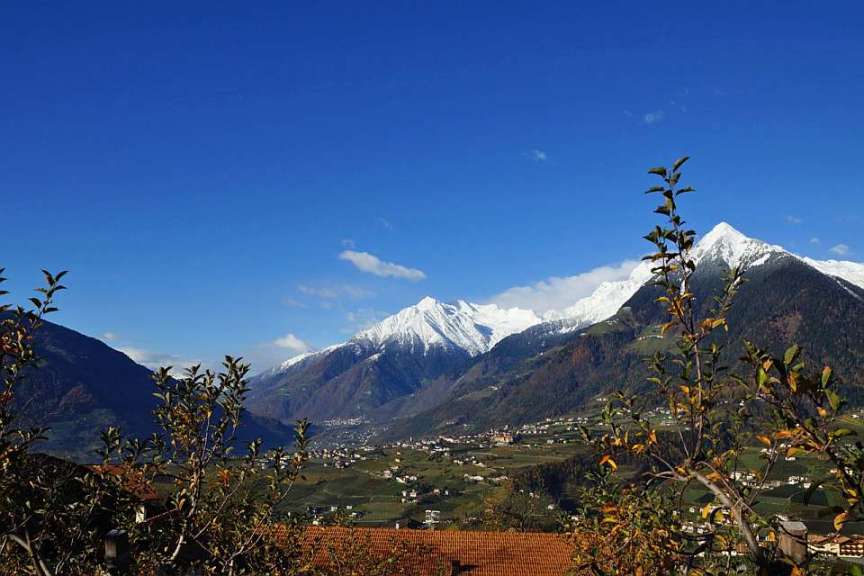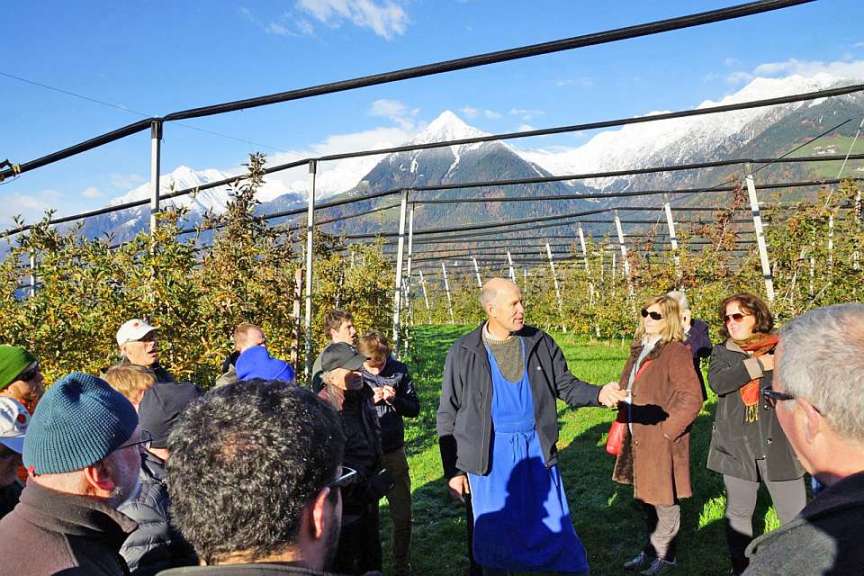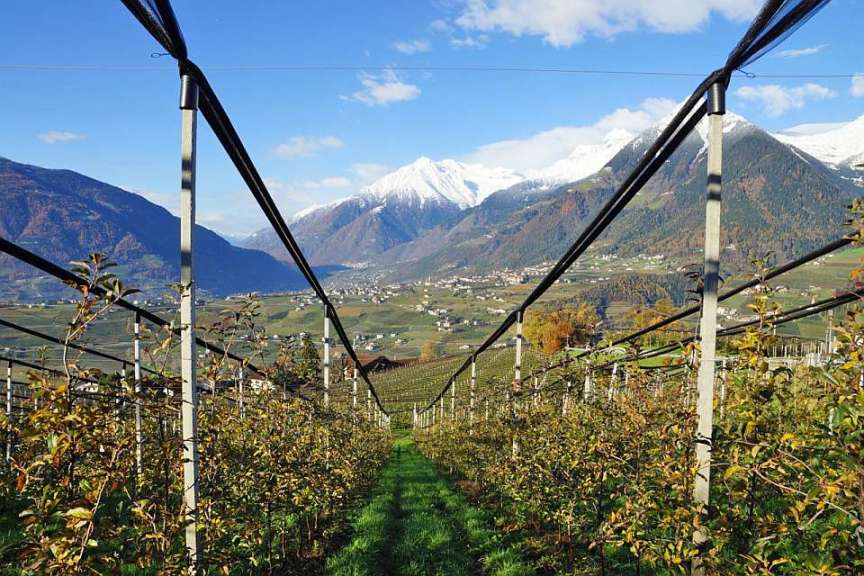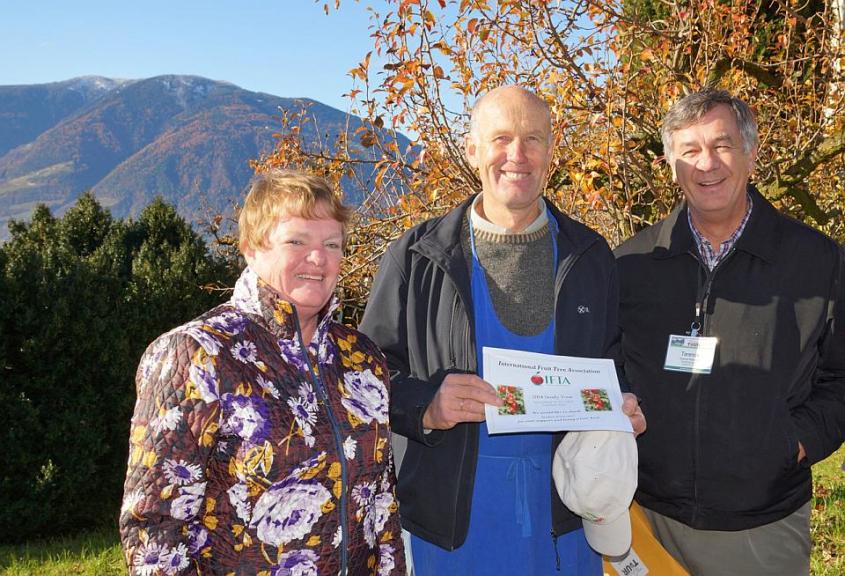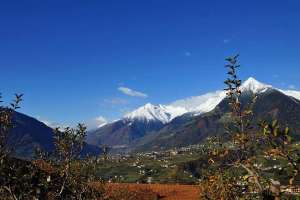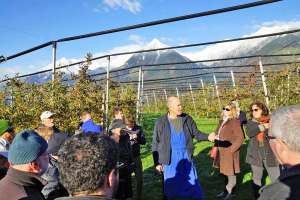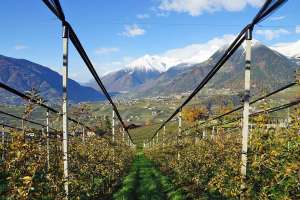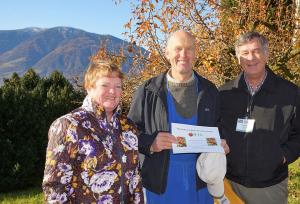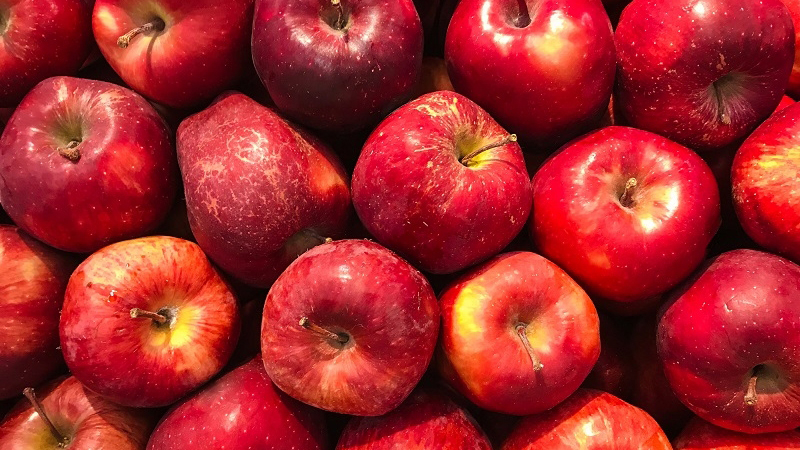On The Road With The International Fruit Tree Association Study Tour To Italy Part 3 [Slideshow]
[blackoutgallery id=”68965″]
Editor’s note: American and Western Fruit Grower Editorial Advisory Board member and Rutgers Cooperative Extension area fruit agent Win Cowgill was our correspondent for the 2014 IFTA Study Tour to Italy in November. Read Part 1 and Part 2 of his reports. Win’s posts, like this one, share the flavor of growing fruit in Italy, as well as some of the production techniques unique to the region.
Our first stop was to the farm of Stephan Klotzner, in the town of Schenna Meran. Many orchards around the world are located at higher elevations for frost protection and have wonderful views. But Stephan’s orchard at 700 meters above sea level took my breath away. I have never seen such a place to live and grow fruit.
Orchard Highlights
■ Sixth generation family farm
■ Ten hectares of land
■ Father and son are the main labor, with Polish and Czech workers for thinning and harvest.
■ Production is 700 tons/year
■ All apples are planted on M.9 at 3-by-0.8-1 meters
■ 70% of the acreage is covered with hail nets
■ All orchards had frost irrigation with overhead sprinklers. These were springs fed by glaciers, so natural pressure is adequate. Some trickle irrigation is used.
Varieties Grown
■ 70% Golden Delicious
■ 20% Red Delicious
■ 5% Kanzi
■ 3% Braeburn
■ 2% Fuji
■ And a small variety orchard that included SweeTango
A main concern is spray drift, as they do a lot of agritourism. They have town roads that travel through their property as well, to schools, homes, etc. In addition, on their steep slopes, spray drift travels downhill in the afternoon. To handle this, they only spray from 7 p.m until 7 a.m.





